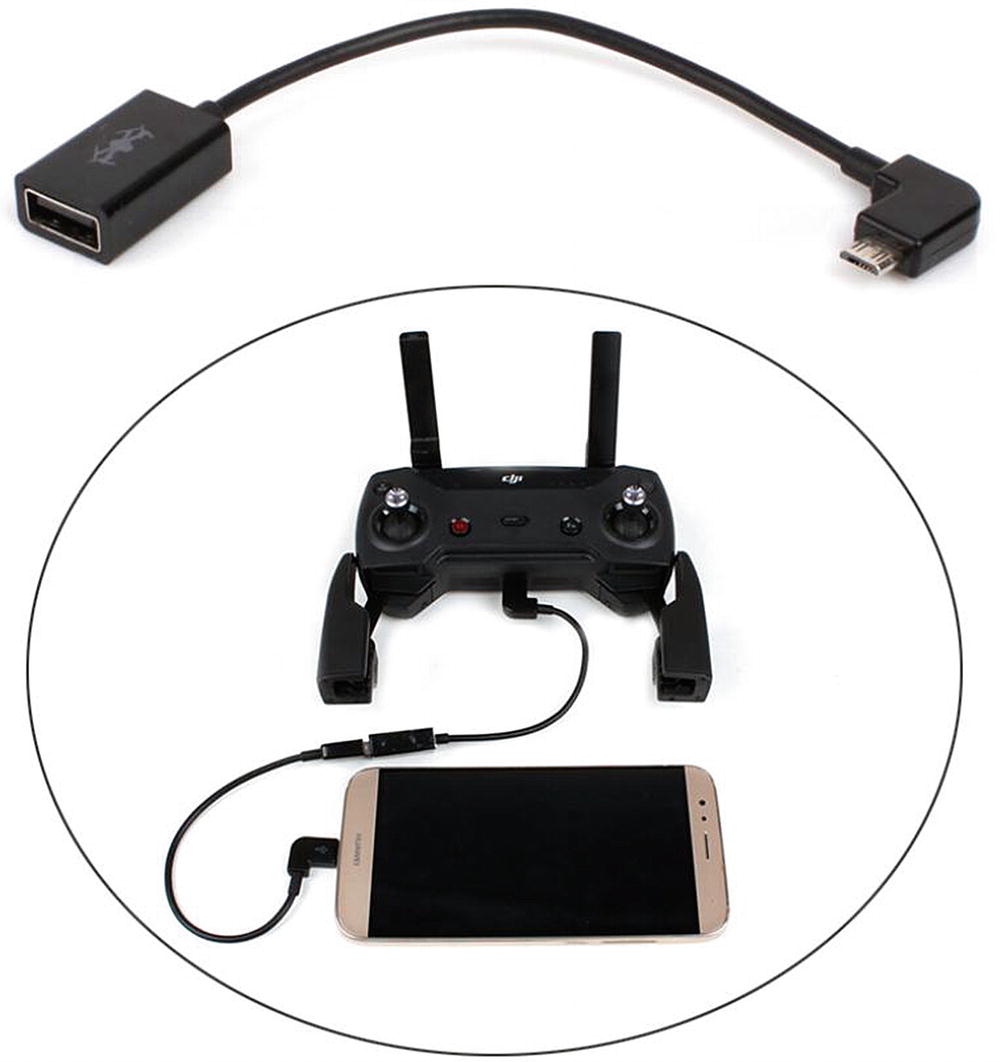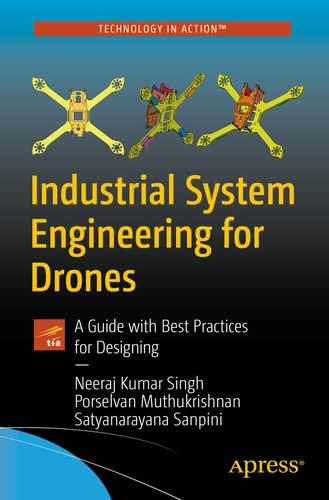System design is a discipline of creating a system/product, starting from requirements to the final deployment in the field. It is a very vast subject and encompasses multiple cross-functional domains such as market research, planning, product definition, hardware design, software design, industrial design, validation, certification, etc. It is very difficult to cover all of these aspects in detail in a single book. This may be why few references cover the system design in detail. This book is an attempt to provide a brief introduction to the system design discipline.
As anyone can understand, a vast variety of systems are possible in the real world. The focus of this book is a typical electromechanical system design, with emphasis on electrical hardware system design concepts. You will be taken through the processes and methodologies comprehensively using the fairly complex electromechanical system of a drone as an example. While this book primarily focuses on the electrical part of the system design, other critical disciplines like mechanicals and software are covered at a high level to give a complete perspective of the system design. To give you a feel of designing a system from scratch yourself, at many places the content is presented from a first-person perspective. By end of the book, you will get a glimpse of how multiple subsystems are developed or chosen carefully (components are either “make” or “buy”) to get a flawless system (through the drone example). The focus areas vary dynamically, but “make” components are emphasized more than “buy” components. Hardware is always a make item for most of the system design, so that’s why it’s covered in so much detail.
The organization of the book is as follows. In Chapter 1, we start with brief description of the drone system and its critical components. In Chapter 2, the typical system design flow details are presented. Chapter 3 delves into the drone system’s key ingredients and selection procedure. In Chapter 4, the electronic hardware development process is covered in detail. Chapter 5 covers typical procedures and checks followed as part of a system bring-up. In Chapter 6, the software processes and real-time software that go into drone-like systems are discussed. Chapter 7 concludes the book with coverage of the final certification processes a system needs to go through before deployment. Two appendixes provide additional basics and references.
What Is a Drone?
An unmanned aerial vehicle (UAV), commonly known as a drone, is an aircraft without a human pilot onboard. UAVs are a component of an unmanned aircraft system, which includes a UAV, a ground-based controller, and a system of communications between the two. The flight of UAVs may operate with various degrees of autonomy, either under remote control by a human operator or autonomously by onboard computers.
Drones are classified into different categories based on the applications. Applications are broad, and from the design perspective, generally fall under three major groups: military, industrial (enterprise), and commercial.
Military
Drones in military applications are used for anti-aircraft target practice, intelligence gathering and, more controversially, as weapons platforms.
Industrial
The integration of drones and IoT (Internet of Things) technology has created numerous industrial and enterprise use cases: drones working with on-ground IOT sensor networks can help agricultural companies monitor land and crops, energy companies survey power lines and operational equipment, and insurance companies monitor properties for claims and/or policies.
Commercial

Commercial drone
Parts of a Drone System
From an engineer’s view, the key parts of a drone system are the hardware, software, and mechanical elements; and a perfect balance between the three provides a flawless system design.
Hardware

PCBA mounted with SOC and subsystems
The SOC
The SOC is a miniature computer on a chip of a present generation systems, especially a drone system. It’s a semiconductor device and an integrated circuit that usually integrates digital, analog, mixed signal, and radio frequency devices on a single chip. SOCs are most commonly used in mobile computing and embedded systems.
In general, there are three distinguishable types of SOCs: SOCs built around a microcontroller, SOCs built around a microprocessor, and specialized SOCs designed for specific applications that do not fit into the above two categories.
SOC usually consume less power and have a lower cost than the multichip systems they replace.
Note
Intel Core, Atom, and Quark processors are SOCs on a single package.

Top and bottom views of the SOC
Subsystems
Subsystems or electrical subsystems are technologies required in a system to fulfill the intended usage of the system.
Broadly speaking, subsystems fall into any one of the following computer architecture parts: input, output, storage, and communication devices.
Input
A touch panel, keyboard, mouse, microphone, camera, sensors, and remote control are some examples of input devices of a system.
Output
Displays, speakers, motors, fans, and LEDs are some examples of output devices of a system.
Storage
Memory, flash, hard disk drive, optical drive, secure digital, and solid state drive are some examples of the storage devices of a system.
Communication Devices
Wired LAN (local area network), wireless LAN, mobile networks (3G, 4G, and LTE), GPS (Global Positioning System), and USB are some examples of the communication devices of a systems.
All of the subsystems listed above may or may not be a part of a particular drone design. The target application picks the right subsystems to be part of the drone system design.
For example, if the intended application of a drone is surveillance, it should be equipped with a high resolution camera and the SOC used in the system should be capable of accepting and processing the high speed data from that camera. The PCBA should be designed in such a way as to interconnect the high speed data between SOC and the camera module and then be capable of transmitting the live or recorded data via the wireless communication modules.

Parts of a drone
Basic Features of a Drone
Features | Specifications |
|---|---|
Camera pixels | 2MP, 720PHD |
Controller | 2.4GHz |
Channels | 4 channels |
Gyroscope | 6-axis control |
Distance | Control by phone about 164ft/ Control by controller about 262ft |
Battery for quadcopter | 3.7V 900mAh li-po battery |
Detailed Features of a Drone System
Subsystems | Features | Specifications |
|---|---|---|
NETWORK | ||
PROCESSING | Quad-core 2.34 GHz | |
6-core graphics | ||
MEMORY | No | |
32/128/256 GB, 2 GB RAM | ||
CAMERA | ||
Geo-tagging, simultaneous 4K video and 8MP image recording, touch focus, face/smile detection, HDR (photo/panorama) | ||
2160p@30fps, 1080p@30/60/120fps, 720p@240fps, check quality | ||
7 MP (f/2.2, 32mm), 1080p@30fps, 720p@240fps, face detection, HDR, panorama | ||
AUDIO | Vibration | |
Yes, with stereo speakers | ||
No | ||
COMMS | Wi-Fi 802.11 a/b/g/n/ac, dual-band, hotspot | |
4.2, A2DP, LE | ||
Yes, with A-GPS, GLONASS, GALILEO, QZSS | ||
Yes | ||
2.0, proprietary reversible connector | ||
SENSORS | Fingerprint, accelerometer, gyro, proximity, compass, barometer |
Software
- 1.
Firmware components: Many of the HW components (devices) that we put on a system today are not just passive hardware components; they have associated firmware that can help offload certain activities without requiring the CPU’s attention.
- 2.OS and drivers: Typically, in an OS-based environment, to maintain the coherency of device usage and establish a level of security, the SW is divided into system and application domains. Different OSes use different terminologies for the same: system and application domains. This separation typically uses the protection and separation mechanism provided by hardware. And different SOC architectures implement and/or provide different ways for protection and separation. Broadly speaking, there are two parts to the system part of the software:
- a.
The controllers’ and devices’ drivers, which provide access to the hardware and serialize the access requests from different SW components.
- b.
The other part is the overall management of resources (devices/controllers, processor, and memory), and scheduling, etc. It also provides infrastructure for communication across various beings (hardware and software) on the system. This part is commonly referred as the operating system (OS). Given the nature of the usages, drones need to use a real-time operating system (RTOS). RTOS is a category of operating systems that provide a mechanism to guarantee higher bound to a process completion.
- a.
- 3.
Sensing, navigation, and control: With drones being UAVs, sensing, navigation, and control are of the utmost importance. The first piece of this crucial part is the sensing infrastructure, which feeds the navigation system, which triggers control decisions.
- 4.
Application-specific components: In addition to the first three fundamental components, there are likely to be some application-specific components (both software and hardware). For illustration, taking the example of the surveillance drone, there will be image capture, processing, and transmit-related components on the system. The application-specific components make use of the “OS and driver” piece in order to accomplish the goal.

Logical view of the drone software stack
Mechanical
The mechanical system is basically the enclosures, form factor, or simple ID (industrial design) of the drone. The ID determines the exterior and appearance of the drone. The ID of the drone will usually have numerous mechanical parts in a complicated assembly with electrical parts interconnected through mechanical or thermal interconnects.
The most popular drone, seen in Figure 1-1, has a quadcopter built from an X-frame or H-frame with four servo motor/propeller units on each end with numerous other mechanical parts along with the PCBA enclosed in plastic.
A drone with frame as a base includes propellers, motors, landing gear, body (usually PCBA, flight controllers, and motor drivers), and a battery.
Note
Heavier drones are powered using alternate fuels other than batteries, such as solar power or gasoline. Drones operating with these fuels are not only heavy but they use different technology and are designed for different purposes.
The PCBA is usually considered a single mechanical part of a system. The PCBA is the energy consuming part of the system and dissipates heat while doing the operation, so it needs a cooling system.
A typical electronics hardware setup will have a heatsink to spread the heat generated by the integrated circuits, which is often accompanied by a fan on the head to blow out the excess heat. The fan needs separate, additional power on top of the system power and this kind of cooling is termed as “active cooling,” whereas heatsink-based cooling without a fan is called as “passive cooling.” Passive cooling doesn’t need any extra power.

Mechanical parts of a drone
Ground-Based Controllers and Accessories
Ground-based controllers and accessories are essential items required for a drone to operate, just like any other electronic gadget available on the market.
The most important accessory is the RF-based remote controller for the drone, which helps to control the UAV from a remote location. Alternatively, the drones can also be controlled through a smartphone, thanks to the latest advancement in the technologies, but only if the drones are capable of connecting to the 3G/LTE mobile network.
Other functions like video streaming and capture can be done through a smartphone application or GUI (graphics user interface) from a host controller.
The majority of the drones today are battery operated; a charger/power adapter is the other most important accessory of the system.

Typical accessories for a drone
Summary
The intent of the book is to cover the basics of system design with the primary focus on the electrical hardware system design. A drone system will be used as an example to drive the concepts.
A drone is a complex electromechanical system with multiple discrete components connected directly or indirectly. Critical subsystems of a drone are presented as a starting point. Further details of many subsystem designs will be covered in the following chapters.
